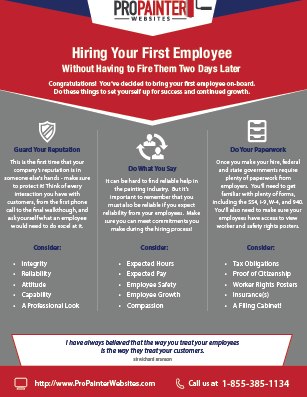Secret Seasonal Considerations For Commercial Exterior Painting: What You Need To Be Enlightened Concerning
Secret Seasonal Considerations For Commercial Exterior Painting: What You Need To Be Enlightened Concerning
Blog Article
Material Created By-Burnham Celik
When you're preparing a commercial exterior paint job, seasonal elements can make or break your outcomes. You'll want to consider exactly how temperature level and moisture influence paint application and drying out times. Choosing the best season can ensure your paint adheres correctly and lasts longer. But which periods are really the most effective for this kind of work? Let's explore the key elements that can influence your job's success.
The Effect of Temperature on Paint Application
When you're planning an industrial outside painting job, the temperature level can significantly impact just how well the paint adheres and dries out.
Preferably, you wish to paint when temperature levels range in between 50 ° F and 85 ° F. If Recommended Online site 's also cold, the paint may not treat effectively, resulting in concerns like peeling off or breaking.
On the other hand, if it's as well hot, the paint can dry as well rapidly, preventing correct bond and leading to an irregular finish.
You must additionally take into consideration the moment of day; morning or late afternoon uses cooler temperatures, which can be much more beneficial.
Constantly inspect commercial and residential painting for the certain paint you're utilizing, as they usually supply support on the perfect temperature level variety for optimal outcomes.
Humidity and Its Impact on Drying Times
Temperature level isn't the only ecological element that affects your commercial exterior paint project; moisture plays a substantial role also. High humidity degrees can decrease drying times dramatically, influencing the total high quality of your paint job.
When the air is saturated with dampness, the paint takes longer to cure, which can cause problems like inadequate bond and a greater threat of mildew development. If you're repainting on a specifically damp day, be gotten ready for extensive wait times between coats.
It's critical to check local climate condition and plan appropriately. Ideally, go for humidity degrees between 40% and 70% for optimum drying.
Maintaining these consider mind guarantees your job stays on track and provides an enduring finish.
Best Seasons for Commercial Exterior Paint Projects
What's the best season for your business external painting tasks?
Springtime and early autumn are typically your best options. Throughout these seasons, temperatures are moderate, and humidity levels are frequently lower, creating suitable conditions for paint application and drying out.
Avoid summer's intense heat, which can trigger paint to dry as well rapidly, bring about bad attachment and coating. In a similar way, wintertime's cool temperature levels can impede appropriate drying and curing, risking the longevity of your paint job.
Go for days with temperatures in between 50 ° F and 85 ° F for ideal results. Bear in mind to inspect the regional weather prediction for rain, as damp problems can ruin your project.
Preparation around these elements ensures your painting job runs efficiently and lasts longer.
Verdict
In conclusion, preparing your business external painting projects around seasonal factors to consider can make a substantial distinction in the result. By scheduling job throughout the perfect temperature levels and humidity levels, you'll make sure better bond and drying times. Bear in mind to watch on neighborhood weather report and choose the right time of year-- springtime and very early fall are your best options. Taking these steps will certainly aid you accomplish a sturdy and specialist surface that lasts.
